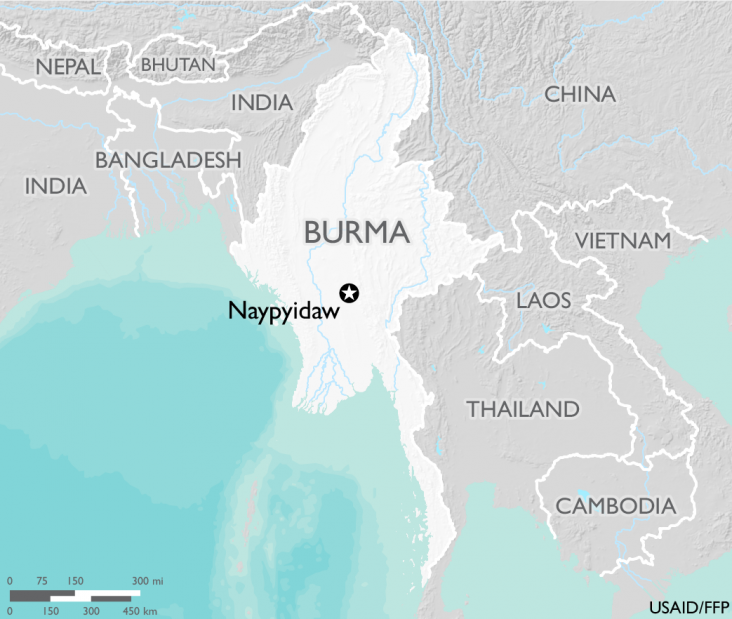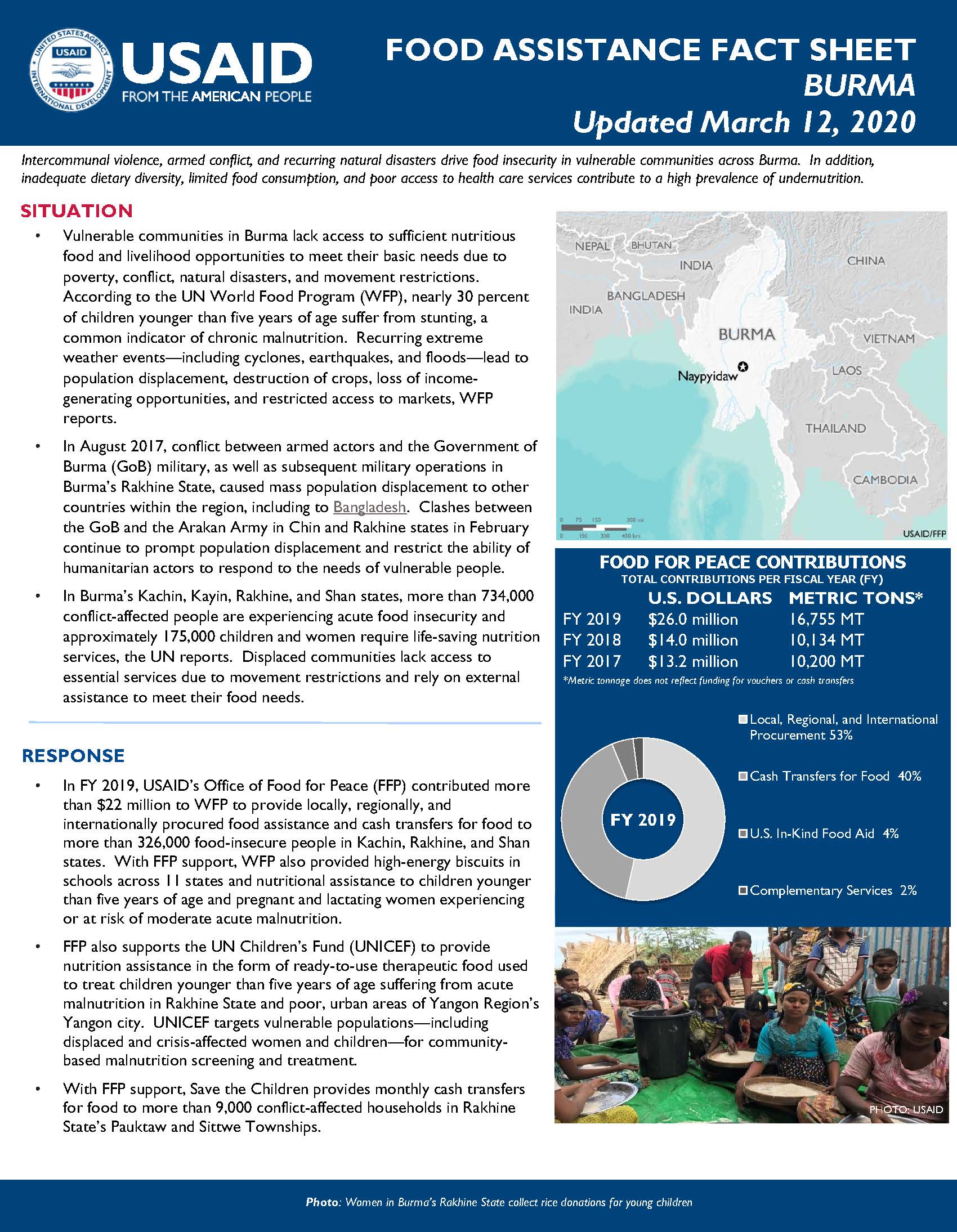Home » What We Do » Agriculture and Food Security » Food Assistance » Where We Work » Food Assistance Fact Sheet - Burma
- What We Do
- Agriculture and Food Security
- Democracy, Human Rights and Governance
- Economic Growth and Trade
- Education
- Environment and Global Climate Change
- Gender Equality and Women's Empowerment
- Global Health
- Humanitarian Assistance
- Transformation at USAID
- Water and Sanitation
- Working in Crises and Conflict
- U.S. Global Development Lab
Speeches Shim

March 12, 2020
Intercommunal violence, armed conflict, and recurring natural disasters drive food insecurity in vulnerable communities across Burma. In addition, inadequate dietary diversity, limited food consumption, and poor access to health care services contribute to a high prevalence of undernutrition.
Situation
- Vulnerable communities in Burma lack access to sufficient nutritious food and livelihood opportunities to meet their basic needs due to poverty, conflict, natural disasters, and movement restrictions. According to the UN World Food Program (WFP), nearly 30 percent of children younger than five years of age suffer from stunting, a common indicator of chronic malnutrition. Recurring extreme weather events—including cyclones, earthquakes, and floods—lead to population displacement, destruction of crops, loss of income-generating opportunities, and restricted access to markets, WFP reports.
- In August 2017, conflict between armed actors and the Government of Burma (GoB) military, as well as subsequent military operations in Burma’s Rakhine State, caused mass population displacement to other countries within the region, including to Bangladesh. Clashes between the GoB and the Arakan Army in Chin and Rakhine states in February continue to prompt population displacement and restrict the ability of humanitarian actors to respond to the needs of vulnerable people.
- In Burma’s Kachin, Kayin, Rakhine, and Shan states, more than 734,000 conflict-affected people are experiencing acute food insecurity and approximately 175,000 children and women require life-saving nutrition services, the UN reports. Displaced communities lack access to essential services due to movement restrictions and rely on external assistance to meet their food needs.
Food Assistance Fact Sheet - Burma ![]() (pdf - 246k)
(pdf - 246k)
Response
- In FY 2019, USAID’s Office of Food for Peace (FFP) contributed more than $22 million to WFP to provide locally, regionally, and internationally procured food assistance and cash transfers for food to more than 326,000 food-insecure people in Kachin, Rakhine, and Shan states. With FFP support, WFP also provided high-energy biscuits in schools across 11 states and nutritional assistance to children younger than five years of age and pregnant and lactating women experiencing or at risk of moderate acute malnutrition.
- FFP also supports the UN Children’s Fund (UNICEF) to provide nutrition assistance in the form of ready-to-use therapeutic food used to treat children younger than five years of age suffering from acute malnutrition in Rakhine State and poor, urban areas of Yangon Region’s Yangon city. UNICEF targets vulnerable populations—including displaced and crisis-affected women and children—for community-based malnutrition screening and treatment.
- With FFP support, Save the Children provides monthly cash transfers for food to more than 9,000 conflict-affected households in Rakhine State’s Pauktaw and Sittwe Townships.
Food for Peace Contributions
Total Contributions:
| Fiscal Year | U.S. Dollars | Metric Tons |
|---|---|---|
| Fiscal Year 2019 | $26 million | 16,755 MT |
| Fiscal Year 2018 | $14 million | 10,134 MT |
| Fiscal Year 2017 | $13.2 million | 10,200 MT |
* Metric tonnage does not reflect funding for vouchers or cash transfers.


Comment
Make a general inquiry or suggest an improvement.